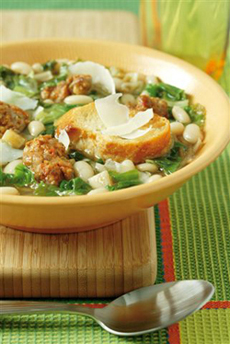TIP OF THE DAY: Try A New Soup & The History Of Soup
|
It’s well below freezing in much of the country today: a good day to focus on soup.
Every culture makes soup. It’s easy, filling and nutritious, and can be inexpensive. In much of the world it’s eaten for breakfast, lunch and dinner. January is National Soup Month. Rather than fall back on your favorites today, discover something new. Start with our delicious Soup Glossary, featuring many different types of soups. Then, check out our soup garnishes: ways to add flavor and excitement to your soup. A BRIEF HISTORY OF SOUP Mankind is up to 200,000 years old. For the majority of our existence, we have had no soup. The earliest humans had no cookware—nothing to boil water (or anything else) in. Boiling was not easy to do until the invention of waterproof containers, probably pouches made of clay or animal skin, about 9,000 years ago. We can date the first types of soups to about 6,000 B.C.E., some 8,000 years ago. Our word soup comes from French soupe, which derived from Vulgar Latin suppa, from the post-classical Latin verb suppare, to soak. This indicated bread soaked in broth, or a liquid poured onto a piece of bread. The bread added heft to the meal. |
|
|

